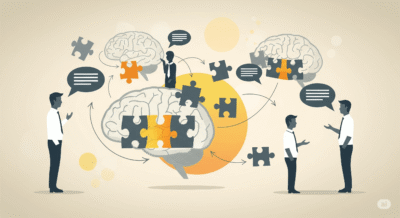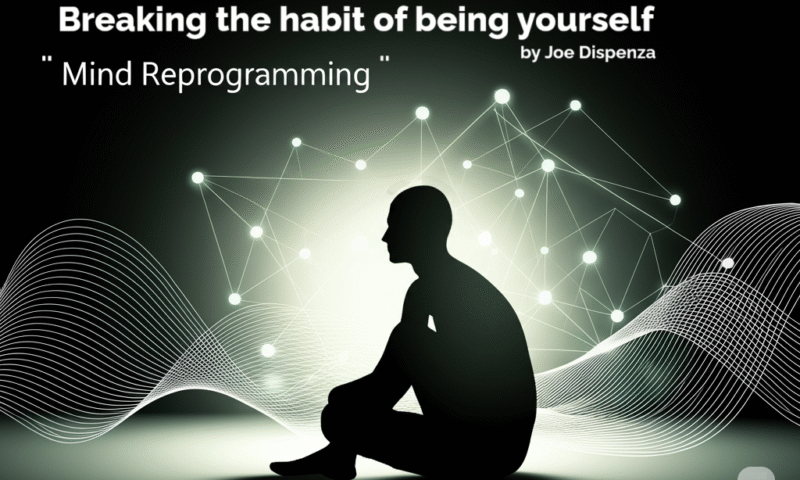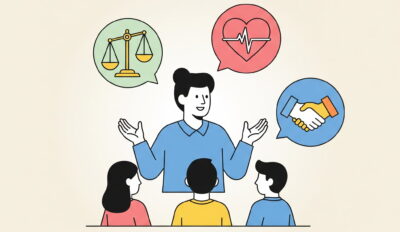introduction
Improving Empathy begins with a simple yet profound choice: to step into another person’s world, feel their joys, and sense their struggles. In a time marked by rapid digital exchanges and surface-level interactions, deep connection can feel surprisingly scarce. Yet, when we pause to truly connect, lives transform. Imagine hearing someone’s unspoken pain, offering a heartfelt response, and witnessing their relief; that is the power of empathy. Through this article, you will discover not only what empathy means but also how to strengthen it in your daily life. Along the way, you will encounter practical, step-by-step guidance and vivid, realistic examples that illuminate each concept like a short film unfolding before your mind. By the end, you will possess a toolkit to nurture empathy skillfully—and perhaps witness transformative moments in your own communities and relationships.
Table of contents
- introduction
- 1. Improving Empathy: Definition and Components
- 2. Improving Empathy: Types and Variations
- 3. Improving Empathy: Practical Steps to Enhance
- 4. Overcoming Barriers to Empathy
- 5. Real-Life Examples of Empathy in Action
- 6. Myths and Misconceptions about Empathy
- 7. Incorporating Empathy into Daily Life and Work
- 8. Practical Tools and Resources
- 8.3 Reflective Literature :
- Conclusion
- References
1. Improving Empathy: Definition and Components
Empathy refers to the ability to understand and share the feelings of another person. In psychological literature, empathy typically comprises two main components: cognitive empathy and affective empathy. Cognitive empathy involves recognizing and understanding someone else’s emotional state—essentially, imagining what someone else is thinking or feeling. Conversely, affective empathy refers to sharing or mirroring emotions—feeling sadness when someone else is sad, happiness when they rejoice, or anxiety when they worry
1.2 Cognitive Empathy:
At its core, cognitive empathy is about perspective taking. When you engage cognitive empathy, you listen not only to the words but also to the underlying emotions. Therefore, you might ask yourself, “What thoughts run through their mind in this moment?” For instance, a study of medical students found that those with higher cognitive empathy scores were 0.55 times more likely to understand patients’ perspectives accurately, which directly improved patient satisfaction
1.3 Affective Empathy:
This component involves emotional resonance. When someone shares a personal struggle, a person with strong affective empathy might physically feel tension in their chest or warmth in their chest, echoing the other’s emotional state. Research in healthcare settings reveals that when nurses exhibit higher affective empathy, patient well-being improves significantly, reducing burnout by up to 30% among staff.
1.4 Empathy as a Skill:
Contrary to common belief, empathy is not solely an innate trait. Although some individuals display a natural predisposition, numerous studies show that empathy can be learned and strengthened through specific training and practice. For example, educational interventions improved empathy scores among clinicians by 80% across a range of medical programs. Therefore, recognizing empathy as a skill implies that anyone, regardless of their starting point, can improve through intentional effort.
2. Improving Empathy: Types and Variations
Empathy manifests in several types and variations beyond the basic cognitive-affective dichotomy. Understanding these variations can clarify which aspect of empathy to cultivate at any given time:
2.1 Emotional Empathy (Affective Focus):
This type involves actually feeling what another person feels. For example, when someone close to you experiences grief, you might feel heaviness in your chest as you share their sorrow. However, becoming overwhelmed by another’s emotions without maintaining emotional boundaries can lead to burnout. Therefore, emotional empathy requires balance to remain supportive rather than consumed.
2.2 Cognitive Empathy (Perspective Focus):
As mentioned, this involves accurately understanding another’s perspective without necessarily sharing their emotional intensity. For instance, a teacher might use cognitive empathy to understand why a student is anxious about an exam, though the teacher might not actually feel that anxiety. This variation often benefits professional settings, where compassion must coexist with clear judgment
2.3 Compassionate Empathy (Action-Oriented):
Once cognitive and affective empathy occur, compassionate empathy drives you to help. For example, upon seeing a colleague’s distress, you acknowledge their feelings (cognitive), feel concern (affective), and then decide to offer support, perhaps by rearranging deadlines or simply listening. Research during the COVID-19 pandemic found that high empathy levels among college students predicted more prosocial behaviors—wearing masks, volunteering, and practicing social distancing—because empathetic concern translated into tangible actions.
2.4 Somatic Empathy (Physical Resonance):
- In rare cases, individuals physically mimic another’s posture or expression unconsciously. For example, you might yawn when someone else yawns or wince upon seeing someone get pricked by a needle. This automatic mirroring underscores our brain’s neural resonance but may not always be under conscious control.
Understanding these types helps you choose which to focus on depending on context. For instance, first responders or healthcare professionals might emphasize cognitive empathy to maintain clarity under stress. Conversely, friends offering emotional support after a loss might lean on affective and compassionate empathy. Recognizing which facet you naturally gravitate toward allows you to balance the others more intentionally.
3. Improving Empathy: Practical Steps to Enhance
Developing empathy is akin to building a muscle; it requires regular, mindful practice. Below are three actionable steps you can integrate into daily life to enhance your capacity for empathy—each accompanied by clear guidance and examples:
3.1 Daily Mindful Listening
Why Mindful Listening Matters: Many conversations are surface-level; we listen to respond rather than truly hear. Mindful listening shifts that dynamic. When you practice mindful listening, you focus entirely on the speaker’s words, tone, and body language. Consequently, you absorb not just the content but also the underlying emotions.
How to Practice:
- Allocate Uninterrupted Time: Choose at least ten minutes each day to have a conversation without distractions—no phones, notifications, or multitasking.
- Maintain Open Body Language: Face the speaker, maintain eye contact, and avoid crossing your arms. Let your posture convey openness.
- Echo and Reflect: After the speaker shares a thought or feeling, paraphrase: “What I hear you saying is…” or “It seems like you felt…” This reflection confirms understanding.
- Ask Clarifying Questions: Use prompts like “Can you tell me more about why that situation was challenging?” Instead of assuming, you dig deeper to grasp their perspective.
- Pause Before Responding: Allow silences; resist the urge to fill them immediately. Often, people reveal more when space allows them to process emotions.
By intentionally practicing these steps daily, cognitive empathy strengthens. Over time, you will notice yourself picking up subtle emotional cues—tone inflections, facial micro-expressions—that might have been missed before.
3.2 Improving Empathy: Perspective-Taking Exercises
Why Perspective-Taking Matters: Putting yourself in another person’s shoes challenges automatic judgments and biases. It cultivates cognitive empathy by deliberately shifting your viewpoint from “What is my reaction?” to “How might they feel or think?”
How to Practice:
- Choose a Daily Reflection Prompt: Each evening, recall one interaction that day. Ask yourself, “What was the other person thinking or feeling?” For instance, if a cashier seemed curt, consider their possible stressors—maybe an upset family member or a long workday.
- Engage in Imaginary Role-Play: Before entering a conversation—especially a tense one—take a moment to imagine yourself as the other party. For example, if you must deliver constructive feedback to a colleague, imagine how they might perceive criticism and frame your words to minimize defensiveness.
- Journaling for Empathy: Maintain a simple empathy journal where you write short entries: identify a person, describe their situation, and list at least two possible emotional states they might be experiencing. Over weeks, patterns emerge, sharpening your ability to anticipate feelings.
- Read Fiction or Biographies: When you read a story—whether a personal memoir or a well-researched biography—pause frequently and ask, “How does this person perceive their circumstances?” This habit extends beyond literature into real life by training your mind to consistently seek another’s viewpoint.
Over time, these exercises reduce the tendency to snap to conclusions about others, instead fostering a curious mindset that asks, “What hidden emotions lie beneath the surface?” Such habitual perspective-taking can significantly improve communication and reduce conflicts.
3.3 Improving Empathy: Emotional Check-Ins
Why Emotional Check-Ins Matter: Affective empathy requires tuning into your own feelings first; you cannot resonate with another’s emotions if you’re disconnected from your own. By practicing regular self-awareness, you become more attuned to subtle emotional shifts in yourself and others.
How to Practice:
- Set a Daily Reminder: Schedule three short check-ins—morning, midday, and evening. At each, ask yourself: “What am I feeling right now?” Label your emotion: happy, anxious, irritated, or calm.
- Identify Physical Sensations: Notice physiological signs—a tight throat might signal anxiety; a warm sensation in your chest could indicate contentment. This somatic awareness serves as a bridge to recognizing emotions in others.
- Externalize Your Feelings: Describe your current emotion out loud (if alone) or in writing: “I feel slightly overwhelmed by today’s tasks.” Over time, this habit sharpens emotional literacy.
- Project to Others: When you notice someone else exhibiting a physical cue—fidgeting fingers or tense shoulders—recall your own similar sensation. Then ask: “If I felt this tightness, might they feel anxious or pressured?”
- Practice Grounding Techniques: If you find intense emotions arising (yours or others’), use breathing exercises—inhale for four counts, hold for two, exhale for six—grounding yourself to remain present rather than dissociate.
Regular emotional check-ins reduce reactivity and enable you to manage affective resonance with others more healthily. In healthcare settings, for example, clinicians who practiced personal emotional awareness reduced patient distress by up to 25% because they could effectively mirror emotions without being overwhelmed.
4. Overcoming Barriers to Empathy
No matter how committed you are to developing empathy, certain barriers can impede progress. Recognizing and addressing these obstacles is crucial for sustainable growth.
4.1 Time Pressure and Multitasking:
In a world that values speed, taking a moment to truly listen or reflect can feel like a luxury. However, studies demonstrate that just five minutes of uninterrupted conversation can deepen connections significantly. Therefore, consciously schedule brief windows for genuine interaction, even amid busy schedules.
4.2 Personal Biases and Prejudices:
Everyone holds implicit biases that can hinder empathy toward certain groups. To counteract this, engage in regular self-examination. Tools like the Implicit Association Test (IAT) can reveal unconscious biases; once identified, you can actively counteract them by deliberately seeking positive interactions with those you may hold preconceived notions about.
4.3 Emotional Burnout:
Frequently absorbing others’ emotions can be exhausting. Healthcare workers, for example, can experience compassion fatigue when repeatedly exposed to suffering without adequate support. To mitigate burnout, practice
4.4 emotional boundaries:
engage in self-care rituals (prayer, exercise, meditation) and establish limits on emotionally draining engagements.
4.5 Technology Overload:
Digital communication often lacks the nuance of face-to-face interaction—tone can be misinterpreted, and real-time feedback gets lost. To address this, prioritize in-person or voice-based conversations for emotionally sensitive topics. When texting or emailing, use clear, empathetic language and, if possible, follow up via a call to ensure clarity.
4.6 Social and Cultural Differences:
Cultural norms shape how people express emotions. For instance, some cultures value restraint, while others encourage expressive sharing. To navigate these differences, educate yourself about cultural communication styles and ask open-ended questions to avoid misinterpretation.
By acknowledging these barriers and weaving strategies into daily routines, you cultivate empathy that is both deep and sustainable.
5. Real-Life Examples of Empathy in Action
To illustrate how empathy unfolds in everyday life, the following four detailed narratives demonstrate diverse contexts. Each scenario unfolds like a short scene, showing characters’ internal and external journeys as they practice empathy.
5.1 A Teacher and a Struggling Student
In a small city nestled between rolling hills, Ms. Amina noticed that her student Yusuf had become unusually quiet over the past week. Previously an enthusiastic participant in class discussions, he now avoided eye contact, kept his head down, and submitted incomplete homework. Ms. Amina sensed something was amiss and decided to practice mindful listening the next morning.
After class, she gently asked Yusuf if he could stay a moment. She led him to a quiet corner of the classroom, removed her spectacles, and looked him in the eye—a sign she was fully present. “Yusuf,” she began softly, “I’ve noticed you seem quieter lately. I’m here if you want to share what’s on your mind.” Initially, Yusuf shrugged and mumbled, “I’m fine.” Rather than pushing, Ms. Amina paused, letting a respectful silence settle.
After a few breaths, Yusuf whispered, “My father lost his job, and we’re worried about money.” Ms. Amina’s chest tightened—she could feel his fear echoing in her heart. She reflected, “So you feel anxious about how your family will manage?” Yusuf nodded, tears brimming. Ms. Amina felt a surge of affective resonance: her mind raced with empathy and concern. However, she maintained clarity: “I understand this is overwhelming. Let’s see how I can help. Would it help if I discuss arranging extra support with our school counselor or recommend some resources for your family?”
Yusuf exhaled, relief mingling with confusion. He nodded. Ms. Amina spent the next twenty minutes explaining available assistance programs, how to approach the school counselor, and offered to coordinate a small study group to help with his academic load. As Yusuf left, he smiled for the first time that week, hope flickering in his eyes. In that moment, Ms. Amina realized that empathy—both understanding and action—had opened a door for healing and trust.
5.2 A Manager Supporting a New Employee
Mr. Omar had recently become a team leader at a mid-sized logistics company. One of his new team members, Sara, joined with excellent qualifications but seemed anxious and hesitant during meetings. Observing that she barely spoke up, Omar recognized an opportunity to practice perspective-taking.
During a one-on-one check-in, Omar asked Sara how she felt in her new role. She hesitated before admitting, “I’m worried I’ll make a mistake and appear incompetent.” Omar recalled his own first day jitters five years prior. He leaned forward, adopting gentle eye contact: “I remember feeling that way too when I joined this company. It took me a few months to find my footing. Let’s break down your tasks into smaller steps and set up weekly catch-ups so you can raise any concern as soon as it arises. Does that feel more manageable?”
Sara exhaled, surprise and relief evident. She nodded, her shoulders relaxing. Over the next weeks, Omar continued to practice emotional check-ins—asking Sara not only about project updates but also about how she was coping. When he noticed her glancing nervously at performance metrics, he assumed she might feel under pressure. So, he proactively scheduled a short session to share that perfection isn’t expected on day one and that mistakes are learning opportunities.
Within two months, Sara’s confidence soared. She began contributing innovative ideas during team huddles and formed a small peer group to brainstorm improvements in supply chain tracking. Omar’s blend of cognitive empathy—understanding her perspective—and compassionate empathy—providing concrete support—allowed Sara to thrive. The entire department benefited as Sara’s fresh insights reduced shipping errors by 15% within one quarter, illustrating how empathy in leadership can spark organizational success.
5.3 A Neighbor Comforting a Grieving Family
Late one evening in a quiet suburban lane, Mrs. Nadia noticed that a new neighbor, Mr. Karim, had not been seen outside for days. Word spread that Karim’s mother had passed away unexpectedly. On her way back from the mosque, Nadia carried a small tray of homemade soup. She knew that sometimes the simplest gestures—food, presence—carry profound meaning. As she approached Karim’s front door, she felt a knot of gentleness in her chest, recalling her own experience when losing her father.
Knocking softly, she introduced herself and offered the soup: “I wanted to bring something warm for you and your family. I know how heavy the heart feels when a parent leaves.” Karim’s eyes brimmed with tears as he invited her in. In Karim’s living room, framed family photos lined the walls—each image a testament to joyful memories. Nadia took a seat beside Karim’s distraught sister. “It’s okay to feel every emotion you’re feeling,” Nadia said, voice calm. “Lean on your community. We’re here for you.”
As days passed, Nadia visited with fresh bread, listened when Karim spoke about his mother’s smile, and silently sat when words failed. She practiced emotional check-ins, asking gently, “How are you holding up today?” and then simply listened. In those moments, Karim felt his sorrow acknowledged rather than dismissed. One afternoon, as Karim recounted fond memories, a faint smile emerged. He said, “Your visits remind me I’m not alone.” At that moment, Nadia realized compassion intertwined with empathy can heal wounds over time.
5.4 A Volunteer Nurse During Crisis
In a rural clinic facing a sudden outbreak of a contagious illness, Nurse Layla worked twelve-hour shifts, with patients arriving continuously. Among them was Baby Lina, a two-year-old with a high fever and frightened parents. As Lina’s mother clutched her child, her eyes pleaded with Layla for reassurance. Recognizing the mother’s distress, Layla practiced cognitive empathy: she leaned forward, gently touched the mother’s hand, and said, “I see how worried you are about Lina. I would feel the same if it were my baby.” The mother’s shoulders trembled as she quietly sobbed.
Layla quickly adjusted Lina’s medication dosage and monitored her vitals, ensuring the mother knew each step. Instead of reciting clinical protocols, Layla explained in simple terms: “We will give Lina a gentle fever reducer and keep her comfortable. I’ll be right here watching her breathing and temperature.” As Lina drifted into a shallow sleep, Layla offered the mother a hot cup of tea and a quiet corner to rest. “Take a moment for yourself. I’ll call if Lina changes.”
Throughout the shift, Layla checked back hourly, updating the mother on Lina’s condition. By evening, Lina’s fever had subsided. As the mother hugged Layla, she whispered through tears, “Thank you for caring for my baby like your own.” Layla felt a warm resonance deep in her chest—this was affective empathy at work, yet she maintained her composure to continue serving the next patient. In that clinic, where resources were limited, Layla’s empathetic approach prevented panic from escalating, allowing the entire ward to remain calmer and more cooperative during a chaotic crisis.
5.5 A Community Volunteer Helping an Immigrant Family
In a bustling urban neighborhood, Rami, a recent immigrant from a neighboring country, struggled to navigate a new culture, language, and bureaucracy. His family, including his elderly mother who spoke very little of the local language, felt isolated. Observing their struggle, Sara, a local volunteer with a community organization, decided to visit them with interpreters. She practiced perspective-taking, recalling her grandparents’ journey when they first moved and how overwhelming it felt to be in an unfamiliar place.
Upon arrival, Sara greeted them warmly, saying, “Assalamu alaikum. I can only imagine how challenging this transition has been.” She offered to help complete official forms—registration for basic healthcare, school enrollment for Rami’s children, and connecting them to affordable housing services. While filling out forms, Sara noticed the mother’s hesitation: she seemed embarrassed about her poor literacy in any language. Instead of rushing, Sara paused, acknowledging, “I know paperwork can feel confusing. Take your time. We’ll explain each question in your native tongue.”
With interpreters’ help, they progressed through forms methodically. Sara also shared information about local community gatherings where Rami’s family could meet others who spoke their language. Over the next month, Sara continued visiting—sometimes just to share a pot of tea and ask how they were adapting. Because she had taken the time to listen and understand their feelings, the family gradually felt more integrated. The children began attending local school, and Rami secured a part-time job. Through compassionate empathy, Sara’s actions bridged a vast cultural gap, showing that empathy extends beyond emotions to practical support that can transform lives.
6. Myths and Misconceptions about Empathy
While empathy is widely praised, common myths can hinder genuine development. Recognizing and debunking these misconceptions empowers you to focus on what truly matters:
- Myth 1: Empathy Means Agreeing with Everyone
Many believe that to empathize, you must concur with another’s perspective. In reality, empathy simply requires understanding—not endorsement. For instance, you can empathize with someone’s frustration about a policy without advocating for it. This distinction preserves your authenticity while still validating others’ feelings - Myth 2: Empathy Leads to Weakness
Some assume that showing empathy is a sign of vulnerability or weakness. On the contrary, empathy often demands courage—to reveal genuine concern and to stand in solidarity with those who suffer. Moreover, research links empathetic leadership to stronger team performance, higher engagement (up to 76% among employees with empathetic managers), and lower turnover. - Myth 3: Empathy Cannot Be Learned
While natural dispositions vary, empirical data shows empathy can be cultivated through intentional exercises like perspective-taking and emotional awareness. Healthcare interventions improved empathy scores by 80% in trainees, proving that structured programs yield tangible results. - Myth 4: Empathy Is the Same as Sympathy
Though often used interchangeably, empathy and sympathy differ significantly. Sympathy involves feeling pity for another’s situation—standing outside their emotional experience. Empathy, however, entails feeling with someone—entering their emotional space. By distinguishing these terms, you harness empathy’s deeper transformative power.
7. Incorporating Empathy into Daily Life and Work
Integrating empathy into every facet of your life requires systematic effort. Below are suggestions to make empathy a sustained practice rather than an occasional act:
- Embed Empathy in Morning Reflections:
Begin each day with a brief reflection: “Who might need my understanding today?” Visualize potential interactions—family, coworkers, even strangers. This primes your mind to remain open and attentive. - Use Empathy Prompts:
Post sticky notes on your workspace or refrigerator with prompts like: “What might they be feeling?” When faced with a challenging interaction, glance at the prompt to slow down and empathize before reacting. - Create an Empathy Journal:
Document at least one empathic interaction daily. Write down the scenario, your emotional response, and what you learned. Reviewing this journal weekly reveals patterns and highlights areas for improvement. - Embrace Cultural Learning:
Attend local events, read about diverse traditions, and seek conversations across cultural divides. As you learn new social norms, you refine cognitive empathy by expanding your ability to understand differences. - Integrate Empathy into Leadership:
If you manage a team, start meetings by asking team members how they feel about ongoing projects. This simple check-in signals genuine interest and encourages a safe environment where people express concerns without fear. - Host Empathy Circles:
Gather a small group—friends, coworkers, or neighbors—and allocate time for each person to share a challenge while others listen without interrupting. After each sharing, listeners summarize what they heard before responding. This structured empathy circle enhances collective understanding and community cohesion.
By making these practices habitual, empathy becomes second nature—informing your decisions, deepening relationships, and fostering trust.
8. Practical Tools and Resources
Several resources and tools facilitate empathy development:
8.1 Empathy Training Workshops:
Organizations such as The Empathy Institute offer structured online courses featuring videos, guided exercises, and peer feedback. Participants typically report a 30% improvement in empathy measures after completing a module.
8.2 Mobile Applications:
Apps like “Compassionate Mind” provide daily prompts, guided meditations focused on cultivating empathy, and reflective journaling features. While these tools should complement—and not replace—in-person interactions, they serve as convenient daily reminders.
8.3 Reflective Literature:
Books such as “The Art of Empathy” by Karen Armstrong offer historical context and practical exercises without relying on metaphors that conflict with cultural norms. Additionally, subscribing to journals like “Empathy and Mind” ensures you remain updated on the latest research.
Conclusion
Empathy is the bridge that connects hearts and builds trust across differences. Improving Empathy starts with recognizing it as a learnable skill—comprised of cognitive, affective, and compassionate facets. Through daily mindful listening, perspective-taking exercises, and emotional check-ins, you can develop a richer understanding of others’ experiences. Overcoming barriers such as time pressure, biases, and burnout ensures your empathic efforts remain grounded and sustainable. Real-life narratives—from a teacher supporting a grieving student to a nurse comforting fearful parents—demonstrate how empathy transforms tense moments into healing experiences.
As you move forward, remember that empathy is not a destination but a continuous journey. Incorporating structured practices, leveraging resources, and confronting misconceptions fortify your ability to connect meaningfully. When you genuinely step into another’s shoes—feeling their joys, acknowledging their pain—you embody a profound human truth: beneath all differences, we share a yearning for understanding, kindness, and solidarity. May this article serve as a roadmap for your empathic growth, inspiring you to create ripples of compassion in every interaction you touch.
References
Warning: The provided links lead only to the specified content. Other areas of those sites may contain material that conflicts with some beliefs or ethics. Please view only the intended page.
- Nembhard et al., 2022 – Systematic review of empathy interventions in healthcare
https://pubmed.ncbi.nlm.nih.gov/35765156/ - Shi & Du, 2020 – Associations of emotional intelligence and gratitude with empathy in medical students
https://bmcmededuc.biomedcentral.com/articles/10.1186/s12909-020-02041-4 - Zhang et al., 2023 – Educational efficacy of medical humanities in improving empathy: a systematic review and meta‑analysis
https://bmcmededuc.biomedcentral.com/articles/10.1186/s12909-023-04932-8 - Peng et al., 2024 – The Impact of Empathy on Prosocial Behavior Among College Students: mediating role of moral identity
https://doi.org/10.3390/bs14111024


















